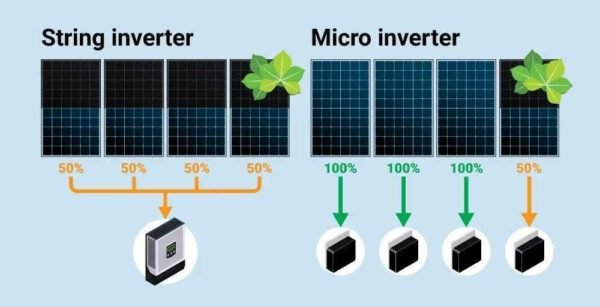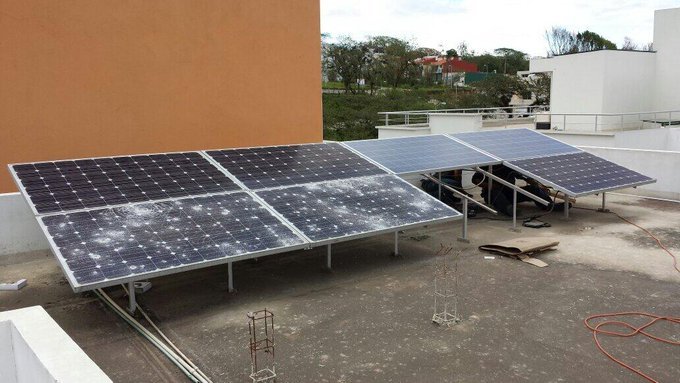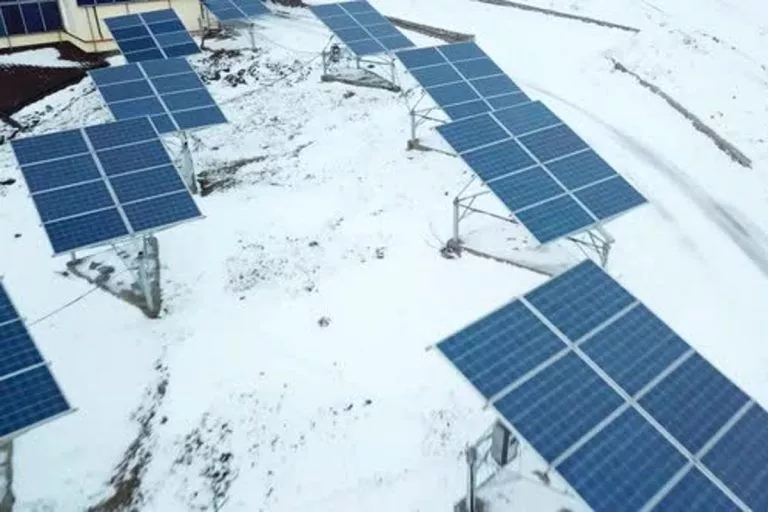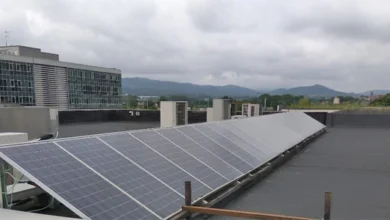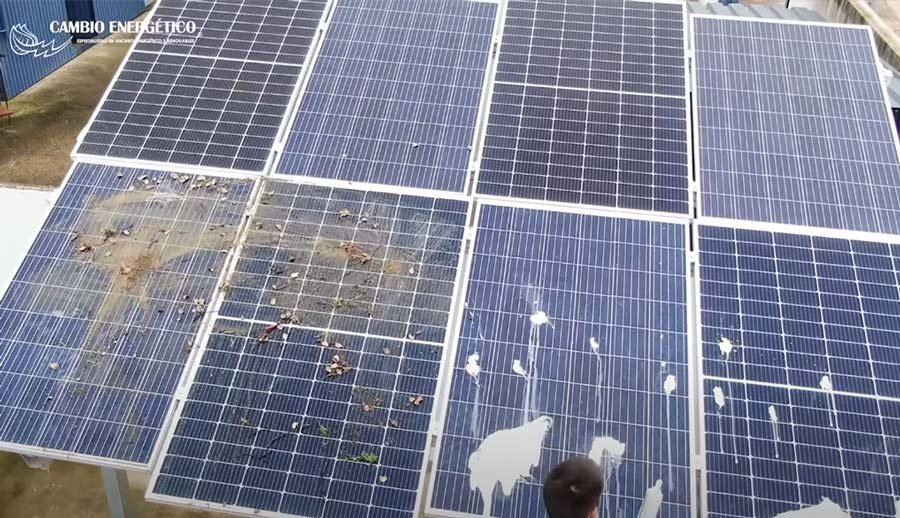
How does dirt affect solar panels?
Today we are going to solve a frequent question that our clients ask us when they decide to install solar panels in their homes, businesses or country houses: How does dirt affect the performance of our panels? How often do we have to clean the panels? solar? .
To answer this question, we have carried out an experiment in which we have used eight solar panels (4 polycrystalline with 72 cells and 4 monocrystalline with split cells), with different levels of dirt, to see how this affects their performance.
Types of dirt that usually affect solar panels
For the experiment, we have worked with three types of dirt that can affect our installation: the normal dirt of some panels that have not been cleaned for 6 months , that caused by bird droppings or and some very dirty panels with soil at an abandonment level of years without cleaning.

To carry out the experiment we have arranged 8 photovoltaic modules placed in pairs of a 72-cell polycrystalline and a split-cell monocrystalline, of which 2 have been cleaned to serve as a reference sample for comparisons, taking their production as 100%. of the performance that the module can give in the conditions in which we find ourselves.
For the other 6 solar panels, we have simulated different degrees of dirt:


How do different types of dirt affect solar panels?
It fundamentally affects by lowering the performance of solar panels . Although we are going to realize that perhaps this drop is not as much as we might think a priori.
And, secondly, depending on the type of dirt, it can affect the integrity of the solar panel itself. For example, very concentrated dirt in an area of the panel that is not cleaned for a long time, such as bird droppings, can end up damaging the plate, producing a hot spot.
What does the loss of performance due to dirt in solar panels depend on?
The performance loss factor of our photovoltaic modules will depend on four fundamental factors:
- Type of dirt : Concentrated dirt, such as bird droppings, is not the same as dirt, for example, atmospheric dust.
- Inclination of the solar panels : The greater the inclination, the greater the effect of the rain washing and the smaller the grooves that remain in the lower part of the photovoltaic module and that sometimes produce a great effect on performance.
- Solar panel cell type : We have split cells and full cells. Dirt tends to affect the split cell of monocrystalline panels considerably less than the complete cell from which polycrystalline panels are made.
- Installation design : Perhaps the most important. There are basically two types of installations: those designed in string , which are chains of modules totally dependent on each other; and installations designed with power optimizers or similar systems.

String layouts are made by stringing panels together. The drawback is that dirt on a single plate of this series of panels will affect all the others, since the performance of the set will be that of the lowest performance. This makes the cleanliness of panels installed in this configuration more important.

In the case of solar panel installations with power optimizers , these make each solar panel work at maximum performance without affecting the rest, so cleaning in these cases is not as important as in the case of designed installations. in string.
What is the loss of performance of our solar panels depending on the type of dirt they have?
In order to obtain data that allows us to analyze the performance losses of our solar panels, we have had them running for 24 hours.
Keep in mind that the experiment we have done has its limitations. We are not in a laboratory and that cannot be forgotten. In addition, we have tried to exaggerate the dirt a lot to have some striking data that allow us to make comparisons. Therefore, the data should be understood as something of an indicative nature.
However, the results are still significant. After reviewing the monitoring, the percentages of performance loss with respect to the type of panel and the type of dirt, are as follows:


As we said, we have taken clean photovoltaic modules (one monocrystalline and one polycrystalline) as a reference sample to compare the incidence of different types of dirt, taking them as 100% of the performance.
The loss of performance of the plates that have not been cleaned for approximately 6 months , which we would consider normal dirt due to pollution or atmospheric dirt, the split cell panel has had a loss of 5%, compared to its sample. Meanwhile, the polycrystalline solar panel has had a 6% loss relative to its sample. With this we can already see how the split cell module will behave better than the normal polycrystalline one.
In the case of the plates in which we have simulated dirt from bird droppings . The split cell panel has had a 32% yield loss relative to its sample; while the normal polycrystalline cell had a 44% loss in performance compared to its sample. And that they are bird droppings that we have exaggerated to have more graphic results.
In the case of panels with extreme dirt (even with branches and pebbles), which simulate a very large degree of abandonment of the installation, we have obtained a loss of performance of 37% in the case of split cell and 46% in the case of normal polycrystalline cell panels.
Conclusions on how dirt affects our solar panels
Even at the risk of being repetitive, it is important to remember that these data must be taken as indicative, since the experiment is not carried out under controlled conditions, as could happen in a laboratory. But the conclusions we have obtained are still very interesting:
1. Split cell solar panels behave better against dirt: The difference between the normal polycrystalline cell and the monocrystalline split cell is important in terms of the performance of the panels against dirt. The split cell always performs better against any type of dirt. This difference between both technologies increases the greater the dirt. In our plates with 6 months of dirt, the difference between one and the other was approximately 1%. But when we go to the plates that have bird droppings or extreme dirt of significant coverage, the difference is between 12% and 15% of performance. And that, over a year, is a significant difference.
2. Performance loss caused by atmospheric contamination is very small. Our modules with 6 months without cleaning, which have a normal society, an atmospheric dirt of dust, pollution, have had a very small loss of performance, something perfectly assumable that already tells us a measure of how often we should clean our solar panels. .
3. Not only the amount of dirt matters but also the type. Despite what might be expected, the difference in performance between the plates with bird droppings simulation and those with extreme dirt is very small. This is striking because extreme dirt occupies almost the entire panel and bird droppings occupy very little surface area of the panel. This is an issue that we have to take into account, especially in areas where we have many birds around: bird droppings are very harmful to the production of our solar panels, and if we have this type of dirt on a regular basis , we should increase the frequency of cleaning our solar panels.
4. Dirt affects string modules more than those with optimizers or similar systems. As we said before, it will depend on whether they are in string or have optimizers. If the dirty panel were connected in series with others, all the panels in its series would be affected by this dirt; that is, the entire series of modules (string) would lose performance. In the same case, if we had an installation with optimizers or similar systems, each module would produce according to its degree of dirtiness/cleanliness, regardless of the dirtiness of the others.
How often should solar panels be cleaned?
How often do you have to clean the solar panels?
Under normal conditions, with panels with normal atmospheric dirt (without significant bird droppings), it is enough to clean them once a year. With this we will have very acceptable performance of our photovoltaic installation. Of course, if we live in an area that is highly affected by dirt caused by birds, trees, sand, etc… we should increase the frequency of cleaning our solar panels.
If you need advice or specialized attention regarding the installation of solar panels, or you are thinking of installing a photoelectric self-consumption installation in your home or company, do not hesitate to contact us without obligation. At Cambio Energético we carry out a detailed preliminary study to offer you the photovoltaic installation that best suits your location, consumption and needs, always controlling the investment and profitability of it so that you can make the best decision for your installation with the data in hand. .

